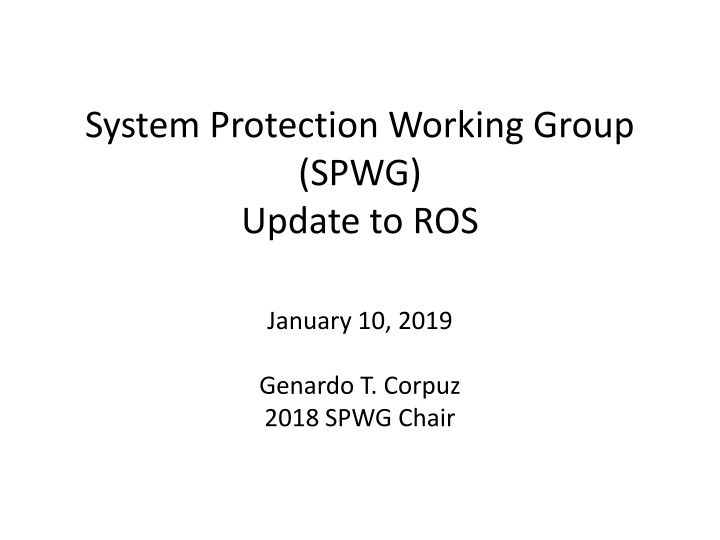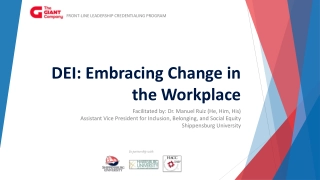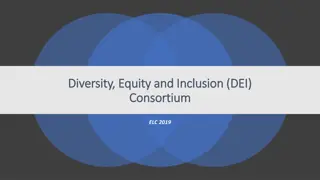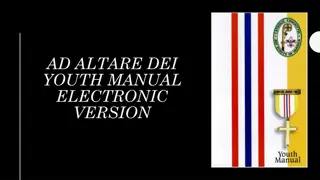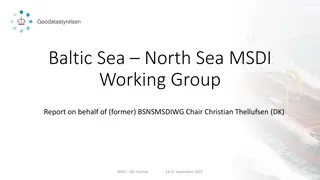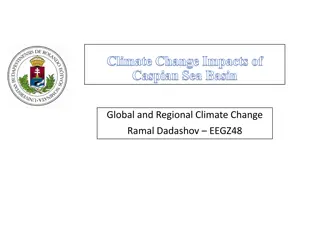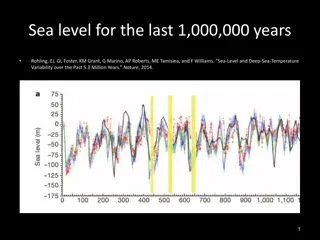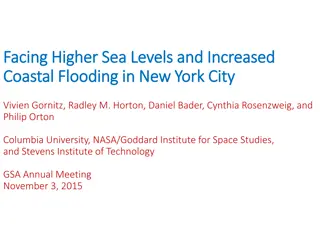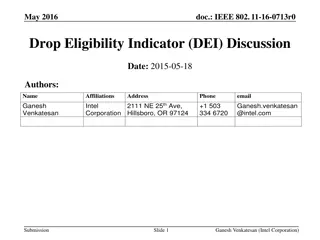SEA Change: Transforming DEI in STEMM
A comprehensive initiative by the American Association for the Advancement of Science (AAAS), SEA Change empowers institutions of higher education to assess and enhance diversity, equity, and inclusion in STEMM fields. Through self-assessment processes, collaborative idea-sharing sessions, and awards, SEA Change supports sustainable systemic change for a more diverse and inclusive academic landscape. NC State, a charter member, aims to deepen DEI understanding, enhance recruitment, and foster a supportive climate for faculty, staff, and students in STEMM.
Download Presentation

Please find below an Image/Link to download the presentation.
The content on the website is provided AS IS for your information and personal use only. It may not be sold, licensed, or shared on other websites without obtaining consent from the author.If you encounter any issues during the download, it is possible that the publisher has removed the file from their server.
You are allowed to download the files provided on this website for personal or commercial use, subject to the condition that they are used lawfully. All files are the property of their respective owners.
The content on the website is provided AS IS for your information and personal use only. It may not be sold, licensed, or shared on other websites without obtaining consent from the author.
E N D
Presentation Transcript
System Protection Working Group (SPWG) Update to ROS January 10, 2019 Genardo T. Corpuz 2018 SPWG Chair
SPWG Meeting Meeting held on November 15, 2018 Short Circuit Case building will start in January 18, 2019 Current Year 2019 Future Years 2020-2024 Reviewed ERCOT SPWG Procedures Revise verbiage to reflect misoperation submittal to NERC
SPWG Meeting 2019 SPWG Chair: Micheal A. Davis, Jr, P.E. CenterPoint Energy | Supervising Engineer | Transmission Planning - System Modeling 2019 SPWG Vice-Chair: Keith Calle, P.E. CPS Energy | Manager | System Protection Engineering
NERC SPCS Updates NERC SPCS representatives from ERCOT SPWG attended the meeting on November 13, 2018 in Atlanta, GA Glenn Hargrave, CPS Armin Klusman, CNP Implementation Guidance Documents PRC-019: Coordination of Generating Unit or Plant Capabilities, Voltage Regulating Controls, and Protection) Draft in progress, expected completion 1stquarter of 2019 PRC-024: Generator Frequency and Voltage Protective Relay Settings Approved and posted in NERC website
NERC SPCS Updates New Standard Authorization Requests (SARs) Being Proposed PRC-019 Update to separate requirements for asynchronous/inverter based generation and synchronous generation PRC-023 Update to remove Requirement R2, Each Transmission Owner, Generator Owner, and Distribution Provider shall set its out-of- step blocking elements to allow tripping of phase protective relays for faults that occur during the loading conditions used to verify transmission line relay loadability PRC-024-2 Draft SAR being proposed by Inverter-Based Resource Performance Task Force to address problems with Inverter-Based protection
Transmission Operator Protection System Misoperations 2018 Q2 ERCOT Protection System Misoperations Data 138kV and 345kV Combined % Misoperation Rate Overall 345kV 138kV 4 per. Mov. Avg. (Overall) 14.0% 12.0% 10.0% 8.0% 6.0% 4.0% 2.0% 0.0% 2011 Q1 2011 Q2 2011 Q3 2011 Q4 2012 Q1 2012 Q2 2012 Q3 2012 Q4 2013 Q1 2013 Q2 2013 Q3 2013 Q4 2014 Q1 2014 Q2 2014 Q3 2014 Q4 2015 Q1 2015 Q2 2015 Q3 2015 Q4 2016 Q1 2016 Q2 2016 Q3 2016 Q4 2017 Q1 2017 Q2 2017 Q3 2017 Q4 2018 Q1 2018 Q2
Misop Rates by Region 16% 14% 12% 10% 8% 6% 4% 2% 0% FRCC MRO NPCC RF SERC TRE WECC NERC 2013 Q3 - 2014 Q2 2014 Q3 - 2015 Q2 2015 Q3 - 2016 Q2 2016 Q3 - 2017 Q2 2017 Q3 - 2018 Q2
Protection System Misoperations 2018 Q2 Q2 YTD # of Misoperations Total 53 96 345 kV 18 32 138 kV 34 62 < 100 kV 1 2 By Category Failure to Trip 2 5 Slow Trip 4 4 Unnecessary Trip during Fault 28 50 Unnecessary Trip Non Fault 19 37 SPS 0 0 By Relay System Type Electromechanical 5 10 Solid State 2 3 Microprocessor 41 71 Other/ N/A 5 12 By Equipment Protected Line 24 42 Transformer 5 15 Generator 1 9 Shunt/Series Capacitor 0 0 Shunt/Series Reactor 4 5 Dynamic VAR system 0 0 Bus 4 4 Breaker 14 20
Protection System Misoperations 2018 Q2 <100 (Bulk Electric System Elements Only) 2% By Voltage 138 65% 345 33%
Protection System Misoperations 2018 Q2 By Category Failure to Trip - During Fault 1% 4% Failure to Trip - Other than Fault 39% 2% Slow trip - During Fault 2% Slow trip - Other than Fault Unnecessary Trip - During Fault Unnecessary Trip - Other than Fault 52%
Protection System Misoperations 2018 Q2 By Relay System Type 10% 13% 3% Electromechanical Solid State Microprocessor N/A 74%
Protection System Misoperations 2018 Q2 By Equipment Protected 21% Line Transformer 44% Generator 0% Shunt Capacitor 5% Bus Shunt Reactor/Inductor 4% Dynamic Var Systems 0% Breaker 10% 16%
Protection System Misoperations 2018 Q2 By Cause AC system As-left personnel error 12% 8% Communication failures 10% 17% DC system Incorrect settings 10% 8% Logic errors Design errors 1% 7% Relay failures/malfunctions Unknown/unexplainable 27%
Protection System Misoperations Summary of Human Performance Issues in 2018 Q2: Generator tripped during start-up. CT shorting screws were left in the CT shorting block after maintenance. 138kV line overtripped during a fault due to CCVT grounding switch left in the grounded position. 138kV line overtripped during a fault due to communication fiber pair terminated in the wrong location. 345kV line overtripped due to miscoordination of settings. Setting changes on the line terminal were not communicated to the remote end owner. 138kV line overtripped during a fault. Pending relay settings had not been implemented. 345kV DTT misoperation due to communication cards with different version model numbers installed. 138kV generator line misoperated due to mismatched L90 firmware versions on the ends of the line. 138kV line overtriped due to reversed polarity in the current polarizing circuit. Capacitor bank fault caused the 138kV bus to trip due to incorrect capacitor bank breaker failure design.
Protection System Misoperations Failure to Trip/Slow Trip Misoperations in 2018 Q2: 138kV generator breaker slow to trip while taking unit off line. DC ground prevented full DC voltage from being applied to breaker trip coils. 34.5kV wind plant breaker failed to trip during a fault because 125V DC was not applied to its trip coils.
